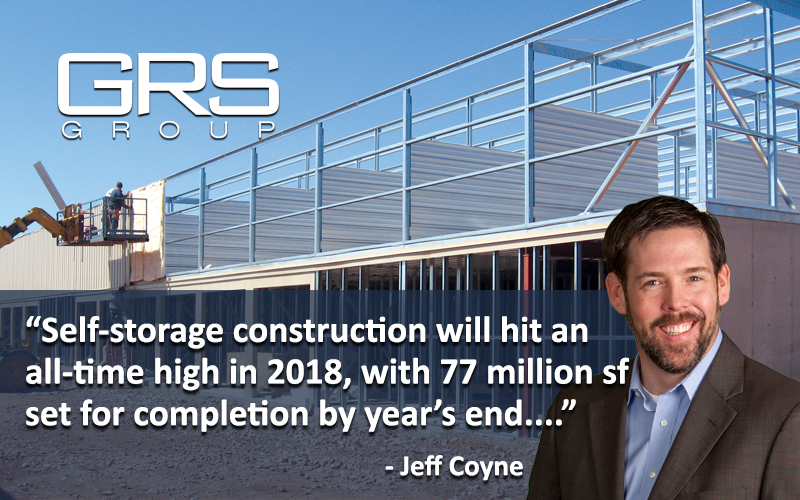
Jeff Coyne
Director, GRS Group
(510) 962-9534
[email protected]
Ever-increasing occupancy into multifamily buildings due to recent college graduates and younger people moving away from home, as well as people looking to downsize because their children have left the house, has caused a recent self-storage construction boom.
A recent Marcus & Millichap report (download here) says that self-storage construction will hit an all-time high in 2018, as a result, with 77 million square feet set for completion by year’s end. Though the firm predicts a bump in vacancy by 40 basis points, hitting 10 percent, rents are also forecast to increase, 0.8 percent, to $1.21 per square foot.
The strongest vacancy rate reported by Marcus over the last 12 months was in the Midwest, where it stood at 4.5 percent, a decline of 60 basis points. The rents were highest in the West staying flat at $1.61 per square foot, including a four-percent 12-month rise in the Seattle area. Texas and Oklahoma had the highest vacancy, hitting 8.3 percent, while rents were the lowest, at 96 cents per square foot. By major metro areas, the tightest vacancy was in Las Vegas, at 5.5 percent, while New York City boasted the highest rents, at $2.60 per square foot.
Transaction activity is hot nationally, as the average price per square foot at the average self-storage asset has increased 11 percent over the last year, hitting $108 by the end of June.
On the self-storage REIT front, Public Storage, the industry’s largest with about 2,400 facilities across the country, posted mostly favorable results during its most recent quarter. Net income came in at $348.3 million, up from $276.7 million during the same year-ago period. FFO per share was $2.65 for the quarter, a rise from $2.31. Portfolio occupancy did drop, though, to 92.3 percent, from 93.1 percent.
Meanwhile, Extra Space Storage, the owner of nearly 1,600 assets, also had a productive second quarter. Net income rose 8.7 percent year over year, reaching 75 cents per share, while FFO increased 5.5 percent, hitting $1.15. Year-over-year occupancy slightly dipped down to 94.2 percent from 94.3 percent.
For 2019, Marcus predicts that construction will slow down a bit as construction costs are expected to increase, and occupancy rates could increase as a result.

